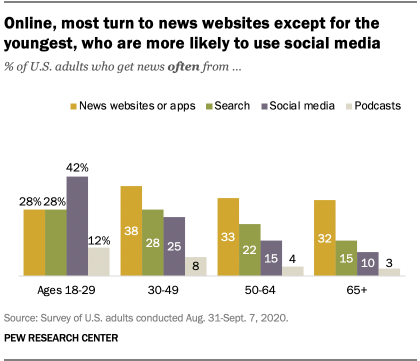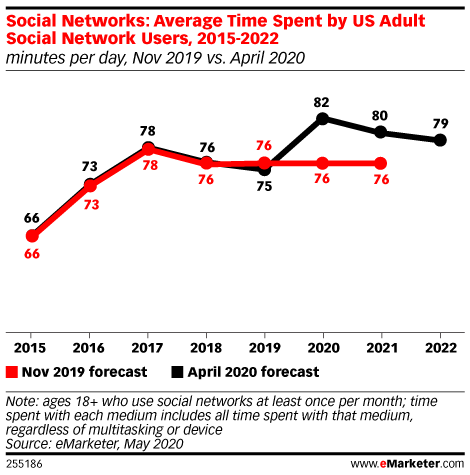admin - 03/04/2021
Social media has undergone many changes in the past year. 3E PR intern Jeanette Orlando looks at four social media trends from last year that are continuing in 2021.
The past year has changed the tone of social media and how we all interact with it. Social media amplifies our voices while keeping a record of our actions, adding to the pressure of when and how to post. Brands need to recognize the changes in consumer behavior and social media and make the necessary modifications to continue to effectively and positively interact with their audiences.
While there is always a new social media flavor, such as Clubhouse, existing platforms are always evolving to appeal to their audiences. That was particularly true in 2020. From tone and messaging to how to sell products, companies have had to adapt their social media approach. Here are four trends from 2020 and how they continue to impact brands in 2021.
Opinion Sharing Is Now Expected
Perhaps no year changed the climate of social media platforms quite like 2020. Not long ago, there was a somewhat unspoken precedent about the type of posts for each platform. Instagram was popular for posting amongst friends. Twitter catered to political and news-oriented content. Facebook casually blended the two.
 Events throughout the country last year sparked an intense movement fueled by every social media platform. Posts and stories everywhere addressed cultural issues, from the pandemic and social justice to politics and employment. Many users even expressed not feeling comfortable being active on social media until the emotions associated with these topics subsided.
Events throughout the country last year sparked an intense movement fueled by every social media platform. Posts and stories everywhere addressed cultural issues, from the pandemic and social justice to politics and employment. Many users even expressed not feeling comfortable being active on social media until the emotions associated with these topics subsided.
Opinion sharing has become much more expected of users and will continue to be the norm. This applies to brands, too. It is a tightrope that companies still walk gingerly. Having a sound social media policy and content approval process will go a long way towards not taking missteps that can lead to disaster.
Content Still Lives Forever
Everything you post is permanent. That fact proved to be problematic for many in 2020. Old tweets and Facebook posts haunted public figures and even brands like never before. That emphasizes the importance of having a content review process to eliminate potential controversies.
It also places a spotlight on research tools and conducting social media audits. Taking these steps can help companies become aware of potential issues and possibly avert unexpected problems.
All of this was supposed to go away, along with “temporary” content. Snapchat was the first platform to create posts that “disappear” in 2013, when it rolled out Snapchat Stories. Today, all the major social platforms have similar “stories” that are only available to followers for a short time, usually 24 hours.
Despite these features, content never really goes away. Follows can – and do – take screenshots to capture anything, then post and share them to whomever, whenever. Brands must be sure that all their content meets corporate guidelines, even if the post will only be available for a short period of time.
Social Media as a News Outlet
According to a recent Pew Research study, 53% of Americans get news from social media. As importantly, Americans between the ages 18 to 29 use social media to gather news more than any other method, surpassing news websites/apps and search, based on the survey results.
It is perhaps one reason why there was such debate around misinformation on social media in 2020. Important questions were raised. Who determines misinformation? Whose responsibility is it to stop it?
The answer in many cases, is the respective platform. Twitter, Facebook and other social media companies took it upon themselves to place warning labels with certain posts. They even had their own fact checkers evaluate content. In the past, platforms stayed relatively uninvolved in user activity unless responding to reports, but now they are taking initiative.
In 2021, social media platforms will continue to focus on monitoring the flow of information, especially when it comes to advertising. They will have a say in how content is presented.
Brands must understand this new evaluation process. As we said earlier, brands will be expected to take positions on events and share opinions. Spokespeople will have to be cognizant of what they post and how they phrase commentary. Advertisements must meet stricter guidelines or else they will be rejected by the platform.
E-commerce: Social Media Gains in Value
Social media is also becoming a sales channel. With people spending an average of 82 minutes each day on social media, it’s only natural brands would use it for e-commerce.
 Utilizing sponsored posts and influencers are just a few ways of generating sales from social media. Facebook and Instagram now have shops, creating a convenience factor for users to purchase. As the pandemic limits in-person shopping, these new options continue to grow in popularity.
Utilizing sponsored posts and influencers are just a few ways of generating sales from social media. Facebook and Instagram now have shops, creating a convenience factor for users to purchase. As the pandemic limits in-person shopping, these new options continue to grow in popularity.
Brands must recognize the evolution of online sales and take advantage of social media to help grow. It can’t be the only avenue, though. While the pandemic has increased online purchases, it’s a trend that has steadily grown for the past decade. So, companies must have a comprehensive e-commerce process that integrates social media with other owned media, as well as partner websites.
Social Media Post-pandemic
While it is impossible to say when we will return to “normal,” we certainly appear to be on our way. The COVID-19 vaccines are giving everyone hope that things will soon “open.” With that will be a return to in-person activities and businesses will have regular hours and more customers in-store.
It will be a gradual process, however. We have all read, watched, or listened to stories about what aspects of our current remote lives will stay intact when life opens up again. Most of us have probably had a conversation on the topic, as well.
As we continue through 2021, it’s clear many of the social media changes in 2020 will become permanent. Brands need a sound content and engagement strategy to effectively communicate meaningful messages that resonate with audiences while meeting the evolving expectations and guidelines.

3E PR intern Jeanette Orlando
